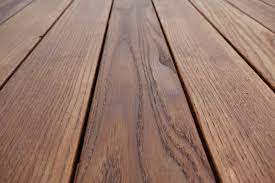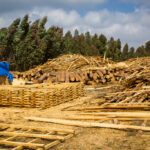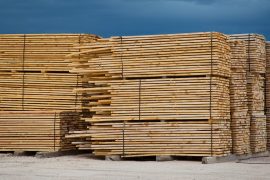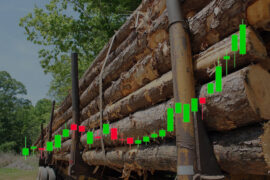Wood is one of the materials that has been naturally available to us from the past. Thermowood is a natural wood whose cellular structure has changed due to the thermal process. Thermally modified wood is known as Thermowood. This type of modified wood is a good alternative to impregnated wood because it has no harm to the environment. In this article, while introducing Thermowood, we will point out its pros, cons, and uses.
What is Thermowood?
A special type of modified wood that has more strength and durability than other woods due to processing with the advanced heating mechanism. In general, wood is heated without igniting to produce Thermowood.
The following is a brief description of this process.
Thermowood Processing
- In this process, the wood is heated to 220 degrees Celsius and the heating is stopped before the wood burns.
- Increasing the temperature changes the chemical structure of wood and as a result its properties also change. Changes in the properties of wood lead to an increase in the strength and durability of wood as well as an increase in the insulating properties of wood.
- Thermowood processing changes the natural color of wood and turns it into a dark brown color. If the thermo wood is exposed to sunlight without any surface coating, its color will gradually change to a very attractive silver gray.
- Cooling stage: In the last stage, the temperature of the wood is reduced by spraying water on it. By lowering the temperature of the wood, the required moisture, which is about 4%, is returned to the wood.
The process of Thermowood has different methods in which water vapor, oil, etc. are used, but in all these processes, the three stages of “drying, heating, and cooling” are common. In general, no chemicals are used to produce this product.
Some Hallmark of Thermowood
Here are some of the salient features of Thermowood:
High Durability and Dimensional Stability
After thermally modified (Thermowood processing), the moisture content of the wood decreases, and the wood acquires a property called “moisture balance” which as a result of moisture absorption and heat exchange of the wood and the surrounding environment is significantly reduced. This has a special effect on dimensional stability, reduction of cracking, and significant increase of Thermowood insulation properties.
Resistant to Rot and Insect Attack
Thermally modified wood is optimized for use in different climates and conditions. Therefore, it can be said that the biological durability of this product is excellent. Due to the breakdown and decomposition of hemicelluloses in high-quality Thermowood, these products will not be a nutrient source for wood rot-causing insects and fungi.
Lichtenberg Wood Burning eBook

Download Lichtenberg Wood Burning eBook
One of the modern techniques for creating wooden artwork is called Lichtenberg wood Burning. In this eBook, we are going to introduce this newfound art to you.
This technique is known with some different names such as Lichtenberg wood burning, fractal wood burning, and electricity wood art.
This technique should not be confused with wood burning art or pyrography. The art of pyrography on wood is the art of creating motifs and designs by burning with hot metal tools on objects such as wooden surfaces.
Lichtenberg burning is a wood-burning technique for creating designs with electricity.
This eBook is a comprehensive guide on Lichtenberg Wood Burning. All you need to know for Lichtenberg Wood Burning is here.
This is a limited-time offer, order now to get access to the future eBook releases.
Recyclability
Do not forget that no chemicals are used in the production of Thermowood and only high heat and water vapor are involved in this processing. Therefore, the final product can be returned to nature, even after the end of its useful life. In the new era, due to the increasing level of environmental pollution, recyclability is one of the best important hallmarks of Thermowood.
Pros & Cons of Thermowood
Here are the pros and cons of Thermowood.
Thermowood benefits:
- High and long resistance to abrasion and various weather conditions
- Easy and fast installation
- Crescent cutting ability for arched places
- Easy to wash and maintain
- Excellent thermal insulation
- low weight
- Without detrimental effect on human health
- Pure and uniform texture
- Beautiful color
- Resistant to rot and insect attack
- No gum, purity and uniformity
Disadvantages of Thermowood:
Despite the many advantages and features of this wood, it may have some minor disadvantages. These are the disadvantages of Thermowood:
- One of the disadvantages of processed wood with high temperature is the reduction of its ignition time. These woods have very little moisture and burn very quickly. This could potentially be one of the disadvantages of thermowood for use in various structures.
- Another disadvantage of thermowood is that due to its low humidity, its flexibility is very low. This may affect the choice of this wood in some uses.
- Another disadvantage of thermowood is that its color is not fixed and changes over time. Especially if it is exposed to sunlight. This may be a disadvantage for some outdoor projects.
Thermowood Uses:
- Wooden facade of the building (wood facade)
- The exterior of the building
- Outdoor and interior flooring
- Types of interior decoration
- All kinds of outdoor furniture
- Pergola
- Awning
- Roof Garden
- Doors, windows, and attics
- Sauna and swimming pool
- Fence
- Stair floor
- Flowerpot
Quality detection method

There are several principles by which high-quality Thermowood can be distinguished from its poor quality.
Ask vendors for a valid certificate in the first place. This certificate includes all the details such as heat and temperature in the Thermowood production process. This certification increases customer confidence.
- Note that the wood veins must be very close together. If these veins are far apart, it means distance from Heartwood. Thermowood cut from heartwood is of much higher quality.
- The appearance of these woods should be smooth and polished and should not have any seams, cracks, or black spots.
- The color of thermowood is dark brown due to the high heat it sees.
- The thickness of thermowood should be between 18 and 21 mm.
- To buy thermowood, it is better to take samples from several reputable companies and compare them with each other and consult experts in this field.






